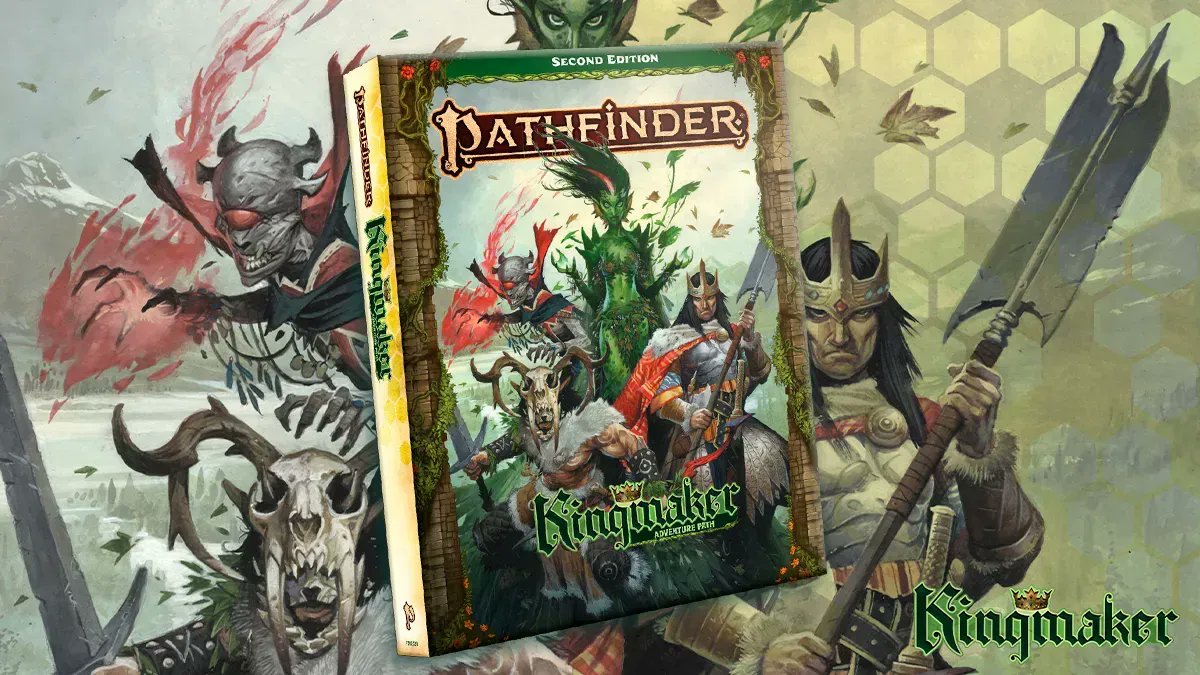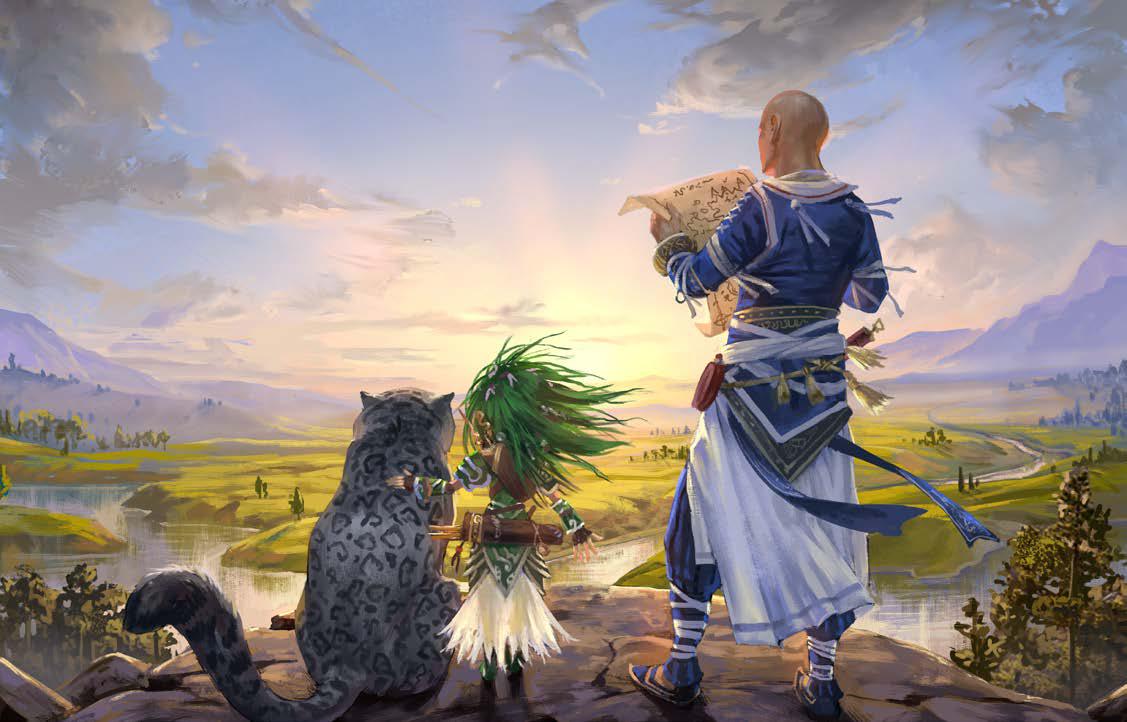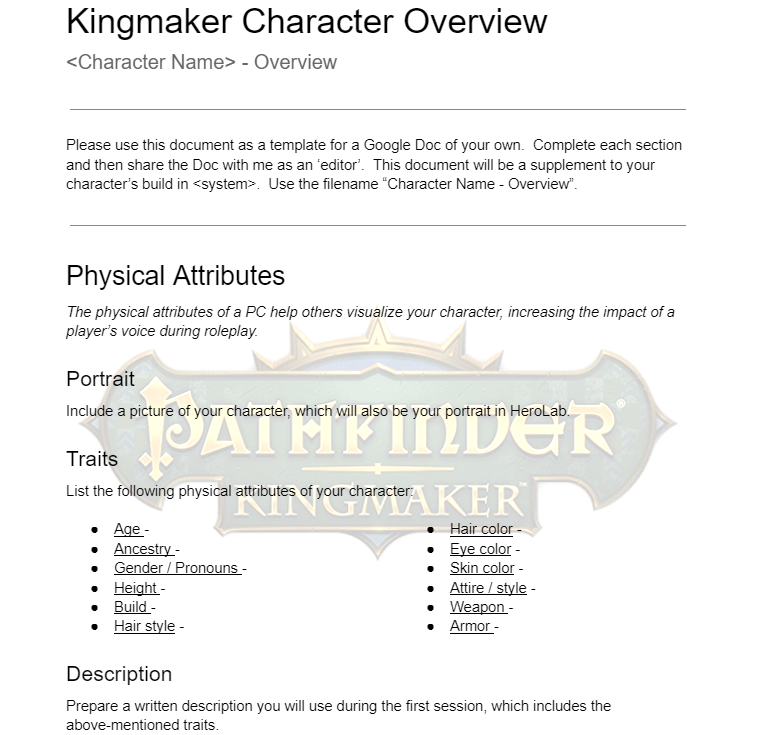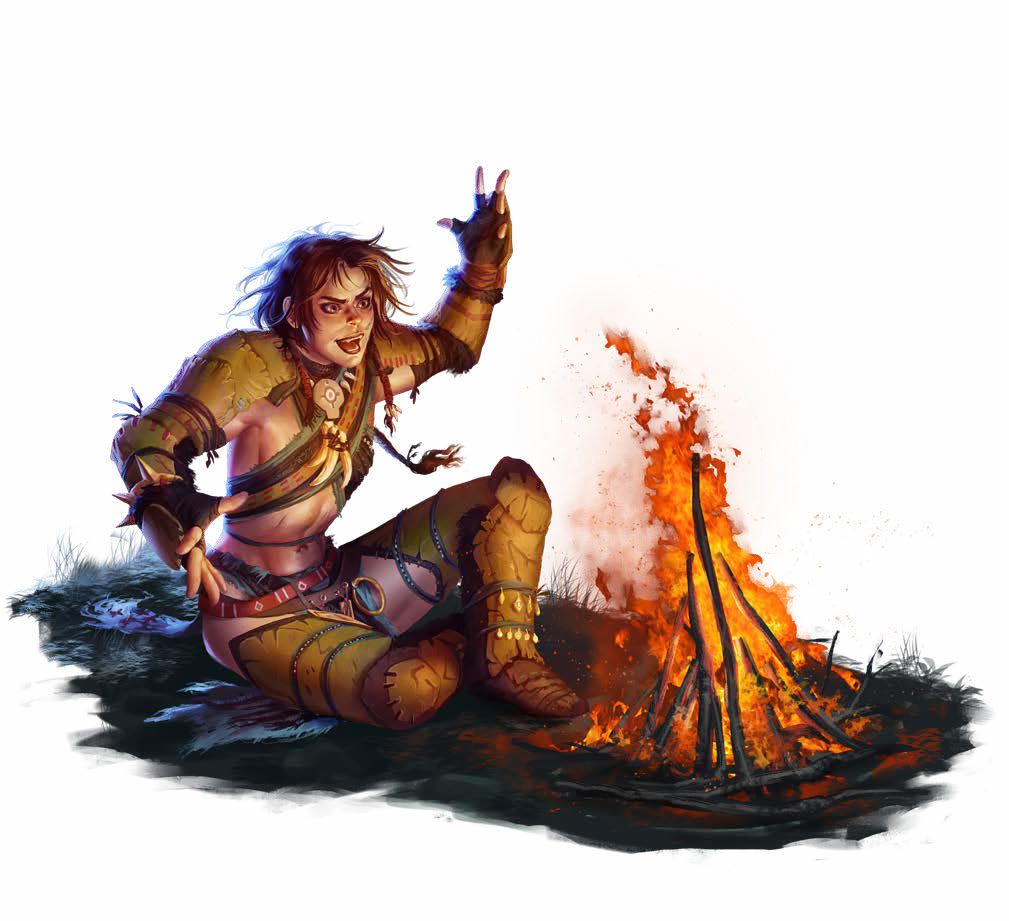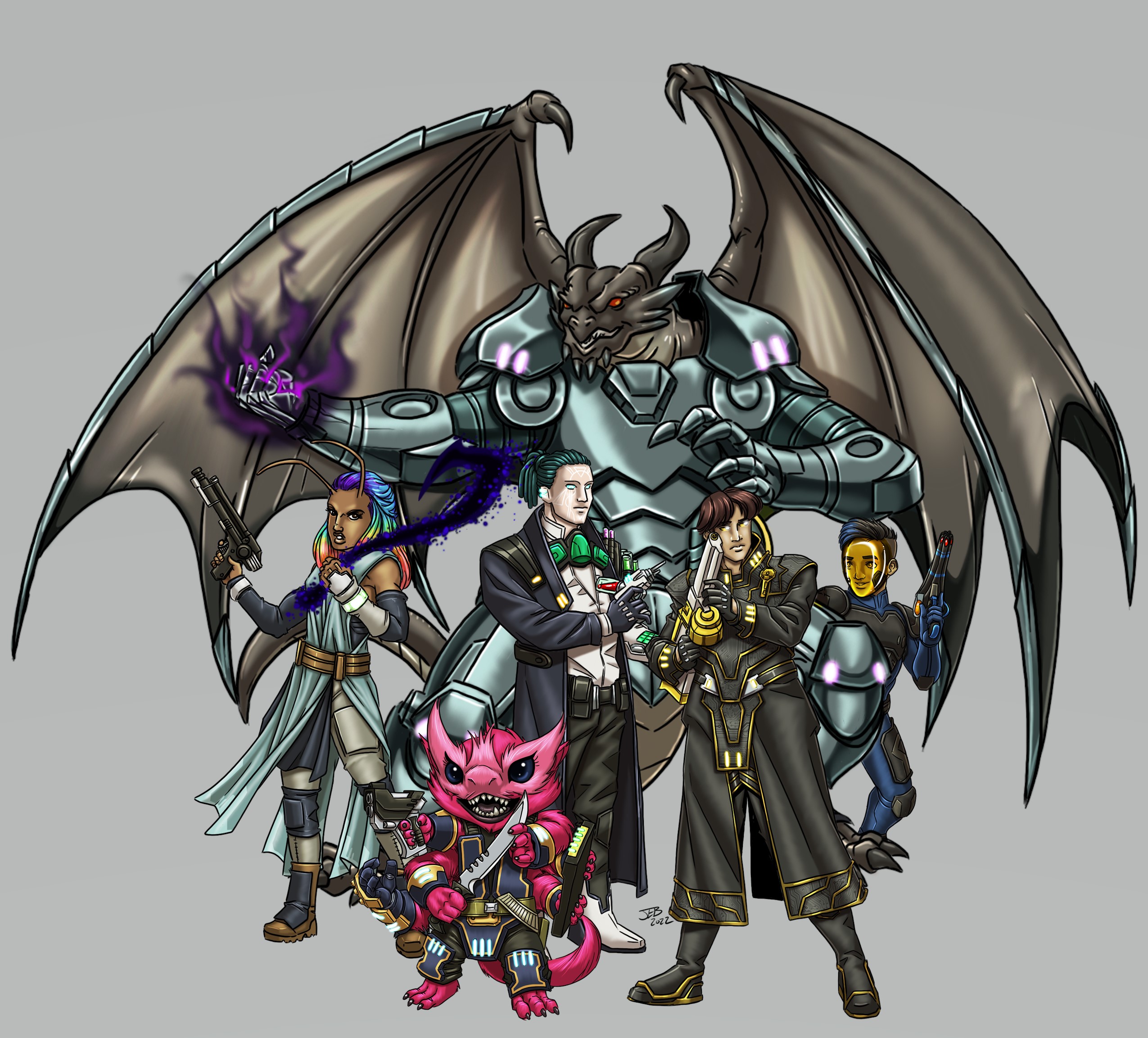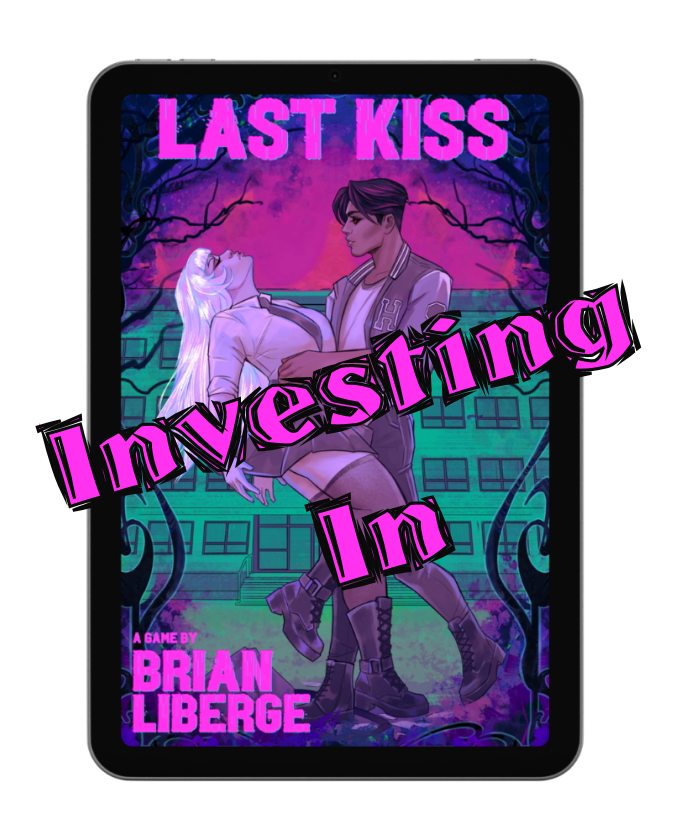“The Kingmaker Adventure Path originally appeared in Pathfinder Adventure Path #31–36. While those who have played that version of the campaign will find familiar elements within these pages, much has changed. We’ve added to the beginning and ending, as well as expanding several adventure sites within the Stolen Lands. Some of these draw inspiration from Owlcat’s Pathfinder: Kingmaker computer game, while others are entirely new to this book. Many of these revisions were inspired by extensive player feedback on the paizo.com forums.
If you’re new to Kingmaker, now’s your chance to experience a campaign that became legendary, a full sandbox experience where your players can chart the course of their own nation!”1
Return To Kingmaker
Whether you’re returning to Kingmaker or venturing out for the first time, do it! Invest in Kingmaker. This is an epic path for adventure, heroes, laughs, fun, and making lifelong memories. I had read through the original path, never played it, but long wanted to. The moment the Owlcat Games’ kickstarter kicked off for the video game, I was in. The moment the 10th Anniversary campaign started, I jumped at it. Warning though don’t play the video game unless you’re prepared for spoilers! The video game has done so well and is so celebrated that material from it and advice from GMs and players alike of the original path has found its way into the new Second Edition release. Now as the materials have found their way to my home, I’ve decided to set up a Kingmaker game. Thus I thought I’d share some of my preparations, plans, and tools I’m using to help our group!
Much like the Expedition Coalition game, which we decided to end after the successful endeavors in Absalom, I brought my group together for a Session 0. I won’t repeat detail on the items I’ve gone over previously like topics of interest, discussion character connections, or safety tools. Shout out to the Paizo team for the Content Warning on page 3, to make it clear some of the items and themes seen in the path. That will definitely aid your Session 0.
Critical Player Roles
Before you get into the character creation or review, I’ve a new step that’s really not that new. I think we all agree it’s important that there’s some manner of support for your game that’s not just the GM running a story. You’ll find with some games that individual players take on OOC Roles. At Order of the Amber Die we utilize this paradigm in order to support our marathon games. My brother also discussed such and we chose roles for the game he runs. Here’s four key roles and a fifth that I’d suggest if you have the players for it or someone wishes to double up!
Player Captain – this individual should know the characters, their mechanics, and how they can work together. They should be able to help the other players with leveling up their characters and be prepared to answer questions at the table about how to use their abilities. The Player Captain may be asked to play a character in combat if someone has to miss a session too. This should be someone knowledgeable of the system, organized, and eager to help the other players. This role requires a lot of time away from the table, but it’ll save even more at the table!
Loot-tenant – speaking of organized, the Loot-tenant is going to track treasure. What did you find? What are you selling? What should you be holding? Who is keeping what when you sell? How much should people get? Obviously there needs to be some alignment of how things are tracked, shared, or dispersed. Familiarity with spreadsheets, finance, Excel or Google Docs are all helpful! This can help the GM track where the party is with funds, what’s been missed, what needs identifying, etc. While this role requires some out of game effort, once a good tracking system is in place a Loot-tenant will likely find most work done at the table.
Meal Sergeant – or as Order of the AmberDie has it, the Castellan. Primarily the Meal Sergeant should help organize meals and snacks, possibly beverages, for longer sessions ahead of time so that the group can focus on the game and having fun together. Maybe this person cooks or maybe they just ensure everyone is bringing food or ordering such ahead of time. Get some healthy snacks too! It also helps that this person should be ensuring trash is collected, dishes are cleaned, etc. Else it often becomes the burden of the host, frequently the GM, to clean up after a game they already spent a lot of time prepping for. Our Castellan of OAD Sean Linville does all that and more. It helps he’s a friendly, hard-working man of many talents. The Castellan will do all things food and drink while ensuring the game space is set up, cleaned, and otherwise caretake over the gaming headquarters. Forever thankful for Sean’s planning and effort to support those marathons!
Rules General – this individual is meant to aid the Player Captain and GM on rules calls. This person should be knowledgeable of the system, specifically how to support the team not in character specific mechanics but special systems like skill challenges, Influence, etc. The GM may look to them for assistance on calls during the game, but that will vary by group. Finally, the Rules General should track a parking lot of items to review after session that the GM or others had to make quick calls on to help the game keep moving.
Recap Colonel – finally, the Recap Colonel tracks the events and activities of the game so that next time they can recap what happened. Some GMs prefer to do this themselves but some players want to keep careful detail anyway. Any player who likes to keep a journal, record events is a great option for this role. It requires little away from the table but during the game they track all that is happening so they can recap carefully. Personally I find this very helpful at games where I as GM might want to avoid giving recaps so I don’t spill any details that the players haven’t yet learned.
Long-term Character Investment
After the various safety tool discussions, rules of the table, timing of the game, interesting themes or things people want to see, and the review of player roles, it was time to talk characters. An important conversation topic should be the investment in these characters. This path has tremendous opportunity for roleplaying and likely to server as a campaign of a few years for your group of friends. Take the time to be sure you love these characters. While character death can happen – and I personally push for permanent death to be meaningful to the story – the likelihood of playing this character for many years is high. Thankfully, a robust Player’s Guide was put out by Paizo to support good options for theme, religious following, good classes and ancestries, etc. I suggest going around the table so each person can discuss what they’re thinking and allow the Player Captain to help advise.
Additionally, I encourage the GMs reading to have each player fill out some additional information for their characters. Here’s a template – as the above image – I adapted from something my brother put together for Character Background Overviews. This will help some players develop out their character’s appearance, history, motivations as well as inform a GM what that character might fear or desire. With this campaign it’s going to benefit you for that long term investment of characters you want to live and care if they die. Finally discuss when the players should have their characters completed. You want to be sure you as the GM and the Player Captain have some time to review backgrounds and character sheets as necessary. This is partly to know the composition of the game, but I encourage knowing the characters as well to weave into the narrative of the game. Ensuring NPCs react to whom the characters are is important, also there’s elements of Kingmaker that center around certain aspects of characters which wise players might pick out from the Player’s Guide.
Kingmaker Systems
As said previously, Kingmaker is an epic path that will have your group making many memories. To support the epic nature and the very foundation of king-making – or rather kingdom making – there’s a number of subsystems involved. Now, the Kingmaker path book does have information for the GM who wishes to run this game with less investment in these. However, I think you’ll lose some of the possible enjoyment if you do so. However, not everything has to be on the GM to track or at least I’d recommend a player help you. The GM materials and guide suggests you might want the player to track who has a character that takes on an in-character role related to the activity, but I’d suggest letting that stay separate so people can take on that which is of interest to them more out of character. This is because the in-character activities related to Kingdom events are certainly different than the out of character needs. Here’s a breakdown of those systems that you can seek support for:
Exploration – A large portion of the campaign is about exploring the wilderness of the Stolen Lands and searching numerous hex grid on the map provided. The GM will need to track what is in each, which is documented in the path materials, but also what’s found. A player should do some cartography and track this as well so the PCs have a character perspective.
Camping – the Companion Guide provides a system that appears to be an expansion of the Camping rules first seen in Age of Ashes. The first part requires finding a campsite but then there’s a number of activities – many seen in the video game – to do while actually camping. I suggest having one player help you track the results of camping and what those in the party due over the course of resting/camping for the night.
Influence and Reputation – The influence system is used for persuading various NPCs throughout the game. A number of groups surrounding the Stolen Lands also come into play for various reasons. A player should help the group track what they believe to be their standing with various individuals and groups as there are enough that they might lose track without such. This might be good for your Recap Colonel to do.
Kingdom – Spoilers, but Kingmaker is about founding a Kingdom in the Stolen Lands. At least hopefully the PCs get to that point. Eventually, as can be seen in the Players’ Guide, you’ll track a character for the Kingdom. Each month you’ll take a turn for the Kingdom as it grows, experience various events, your PCs and NPCs help guide and shape it. The players should definitely do so, and while the eventual Ruler might want this responsibility, finding one particular player to keep the Kingdom sheet updated will be important. Materials are provided in the Companion Guide for this, though I also found the user Leftyist on reddit created a google sheet that is sure to make it easier for all. EDIT: And thanks to tomeric who reached out, as he produced his own for second edition and shared it with everyone on reddit!
Settlements – Additionally as your Kingdom grows you’ll track the settlements, including your capital. The Kingdom materials in the Companion Guide as well as that google sheet give you a creative way to do this. At minimum you’ll be able to fill in some squares and track the buildings in your settlements. If you’ve a player who wants to develop the capital or other settlements in more, then I suggest making that player your Settlements tracker. You may find that different players want to track different settlements depending how your group functions.
Warfare – Also in the Companion Guide are the rules to handling armies and warfare. Your Kingdom might have to go to war or defend itself! Find a player with interest to learn these rules who can help whenever the need comes up during Kingdom turns or specific events of the campaign. There is an in-character General role for characters so this in particular might be a good choice for that character’s player.
Invest in making amazing gaming memories with all the possibilities of Kingmaker! As you review for your game you’ll find there’s a lot to explore and do with this wonderful sandbox campaign! Hopefully this guidance for your Session 0, the roles suggested, and the tools I’ve collected help you have. This is the king of adventure paths and I’m so thankful that Paizo updated it for Second Edition with lessons from players and the video game’s success alike! Be sure to share with me how your Session 0 goes and I’m excited to hear what other tools, systems, and plans you have!
Investing In:
I wasn’t quite sure what to name my article series when I first started but the idea of showcasing or discussing things that make me excited, that I find new and interesting, or maybe I’m otherwise passionate about seemed to fit with the idea of Investing In something like the Pathfinder 2E mechanic. To use some magic items you have to give that little bit of yourself, which helps make these things even better. I like the metaphor of the community growing and being strengthened in the same way!
I also want to hear what you’re Investing In! Leave me a comment below about what games, modules, systems, products, people, live streams, etc you enjoy! You can also hit me up on social media as silentinfinity. I want to hear what excites you and what you’re passionate about. There’s so much wonderful content, people, groups (I could go on) in this community of ours that the more we invest in and share, the better it becomes!
Sources
Banner – Pathfinder Kingmaker Adventure Path marketing image, Paizo twitter, Paizo
- Running Kingmaker sidebar, Pathfinder Kingmaker Adventure Path, Paizo
- The Swordlord’s Feast banner, Pathfinder Kingmaker Adventure Path, Paizo
- Public Kingmaker Character Overview Template snapshot
- Tell Campfire Story image, Kingmaker Companion Guide, Paizo

